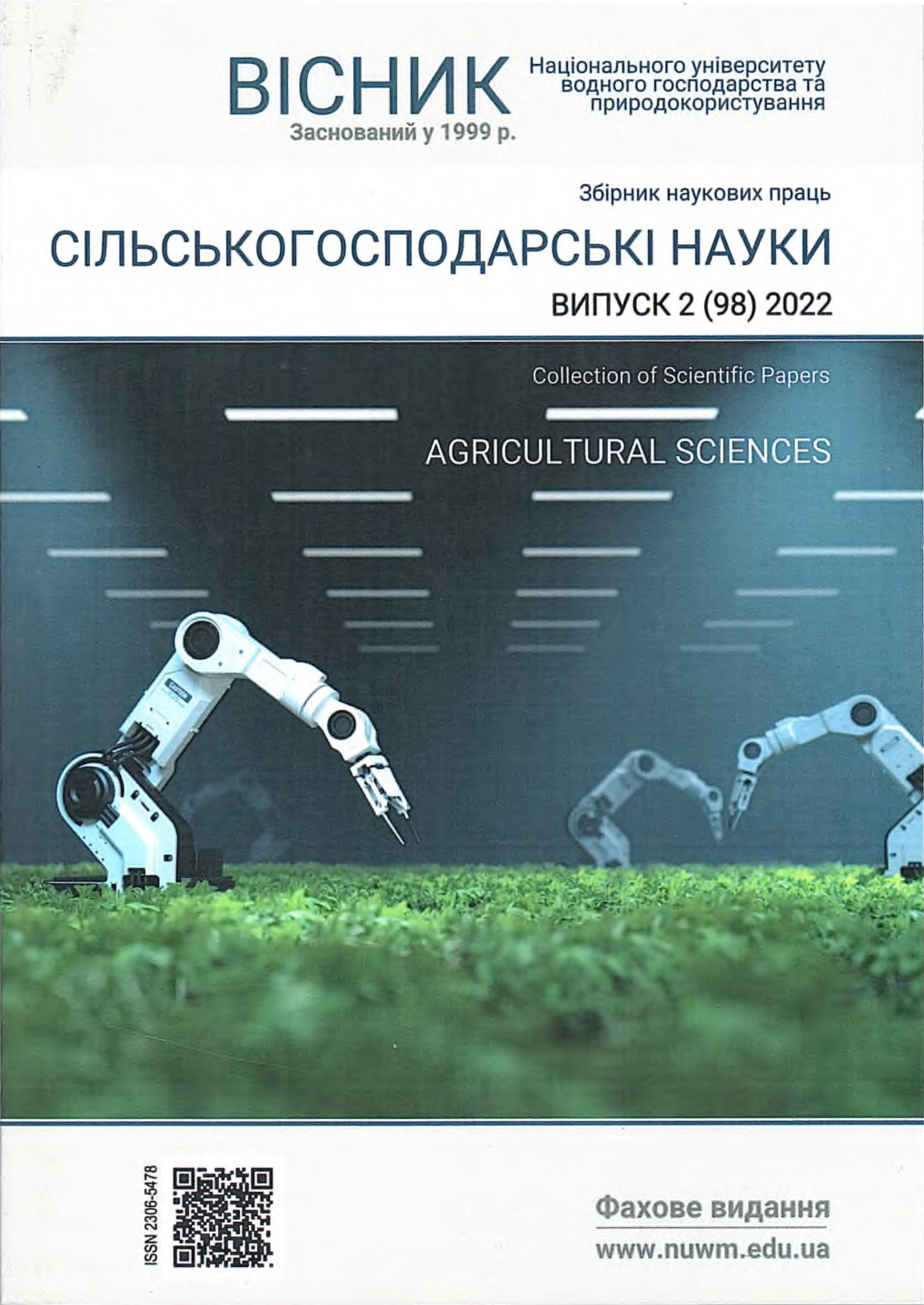EVALUATION OF ECOLOGICAL RISKS FOR THE INHABITANTS OF RIVNE REGION ACCORDING TO THE INDICES OF ENVIRONMENT QUALITY
DOI:
https://doi.org/10.31713/vs220223Keywords:
environment quality, diseases, ecological safety, risk, threat, danger, mathematical dependencies.Abstract
The article considers the problem of the impact of environment quality indices on the state of ecological safety of region inhabitants. It is cleared up that the state of the region territory is characterized by the following indices of environment quality: emissions into atmospheric air from stationary sources that contain 14,1 thousand tons, from the mobile ones 35,6 thousand tons in 2000; high indices of the discrepancy of fresh water quality with the standards (32 percent chemical and 26,8 percent microbiological), wide ploughing up (71 percent); the presence of negative humus balance, from 0,15 to 0,41 tons a year, acidulation of soil covering and low woodiness (35 percent).It is ascertained that prevalence of diseases of region inhabitants depends on the indices of environment quality, e.g. diseases of breathing organs depend on the presence of forests, the consistence of radon flow from the soil surface, summary pollution of atmospheric air by stationary and mobile sources; diseases of digestion organs are caused by the discrepancy of fresh water quality with the standards of State Standard of Technical Conditions according to chemical and microbiological indices and the contents of Caesium-137 in the soils of the region; neoplasms depend on the presence of forests, the consistence of radon flow from the soil surface, summary pollution of atmospheric air by stationary and mobile sources.The impact of environment quality indices on the prevalence of the diseases of breathing and digestion organs, neoplasms are described by polyfactorial linear dependencies with multiplying coefficients of determination from 0,288 to 0,712 and on the level of ecological safety by polyfactorial linear dependencies with multiplying coefficients of determination from 0,262 to 0,681.The dependency of children’s mortality under a year of life depends on the presence of forests and areas covered with forests, it is described by the equation of falling down straight line with R2 – 0,511 and the consistence of radon flow from the soil surface which is described by the equations of rising straight line with R2 - 0,495. It is pointed out that according to the indices of ecological safety ascertained with the help of dependencies the territory of the region is evaluated according to the prevalence of diseases of breathing organs by the category of threat (from 0,25 to 0,3), the prevalence of digest organs diseases by the category of risk (from 0,54 to 0,61), neoplasms by the categories of safety, one district (0,69), 14 districts under risk (0,62–0,56), one district under threat (0,43) which are only different by ± 15 percent from the evaluation fulfilled according to the based on facts data.References
Звонкова Т. В., Саушкина Ю. Г., Смирнова Е. В. Региональный географиче-ский прогноз. М. : Наука, 1977. 252 с.
Гуцуляк В. М. Медична географія (еко-логічні аспекти). Чернівці : Рута, 1997. 72 с.
Кушнірук Ю. С.,
Скринчук П. М. Еколого-демографічні проблеми Рівненської області. Вісник Рівненського Державного технічного університету. Рівне, 2000. № 3(5). Ч. 1.
С. 53–61.
Кушнірук Ю. С. Оцінка медико-екологічного ризику за станом нав-колишнього середовища на прикладі Рівненської області. Наукові захисти Тернопільського державного педагогічного університету. Сер. Географія. Тернопіль, 2006. № 2. С. 177–179.
Доповідь про стан навколишнього при-родного середовища в Рівненській області у 2018 р. Рівне, 2019. 300 с.
Доповідь про стан навколишнього природного середовища в Рівненській області у 2019 р. Рівне, 2020.
Доповідь про стан навколишнього природного середовища в Рівненській області у 2020 р. Рівне, 2021.
Національна до-повідь про стан навколишнього природного середовища в Україні у 2002 році / Міністерство екології та природних ресурсів України. 2002.
с.
Герасимчук З. В., Олексюк А. О. Екологічна безпека регіону: діагно-стика та механізми забезпечення : монографія. Луцьк : Надстир’я, 2007. 280 с.
Клименко М. О., Лебедь О. О. Дослідження об’ємної активності радону внутрішньо-будинкового повітря м. Рівного. Вісник Кременчуцького Націо-нального університету імені Михайла Остроградського. № 3/2017(104). Ч. 1. С. 124–129.
REFERENCES:
Zvonkova T. V., Saushkina YU. G., Smirnova E. V. Regionalnyiy geografi-cheskiy prognoz. M. : Nauka, 1977. 252 s.
Hutsuliak V. M. Medychna heohrafiia (ekolohichni aspekty). Chernivtsi : Ruta, 1997. 72 s.
Kushniruk Yu. S., Skrynchuk P. M. Ekoloho-demohrafichni problemy Rivnenskoi oblasti. Visnyk Rivnenskoho Derzhavnoho tekhnichnoho universytetu. Rivne, 2000. № 3(5). Ch. 1. S. 53–61.
Kushniruk Yu. S. Otsinka medyko-ekolohichnoho ryzyku za stanom navkolyshnoho seredovyshcha na prykladi Rivnenskoi oblasti. Naukovi zakhysty Ternopilskoho derzhavnoho pedahohichnoho universytetu. Ser. Heohrafiia. Ternopil, 2006. № 2. S. 177–179.
Dopovid pro stan navkolyshnoho pryrodnoho seredovyshcha v Rivnenskii oblasti u 2018 r. Rivne, 2019. 300 s.
Dopovid pro stan navkolyshnoho pryrodnoho seredovyshcha v Rivnenskii oblasti u 2019 r. Rivne, 2020.
Dopovid pro stan navkolyshnoho pryrodnoho seredovyshcha v Rivnenskii oblasti u 2020 r. Rivne, 2021.
Natsionalna dopovid pro stan navkolyshnoho pryrodnoho seredovyshcha v Ukraini u 2002 rotsi / Ministerstvo ekolohii ta pryrodnykh resursiv Ukrainy. 2002. 162 s.
Herasymchuk Z. V., Oleksiuk A. O. Ekolohichna bezpeka rehionu: diahnostyka ta mekhanizmy zabezpechennia : monohrafiia. Lutsk : Nadstyria, 2007. 280 s.
Klymenko M. O., Lebed O. O. Doslidzhennia obiemnoi aktyvnosti radonu vnutrishno-budynkovoho povitria m. Rivnoho. Visnyk Kremenchutskoho Natsionalnoho universytetu imeni Mykhaila Ostrohradskoho.
№ 3/2017(104). Ch. 1. S. 124–129.

